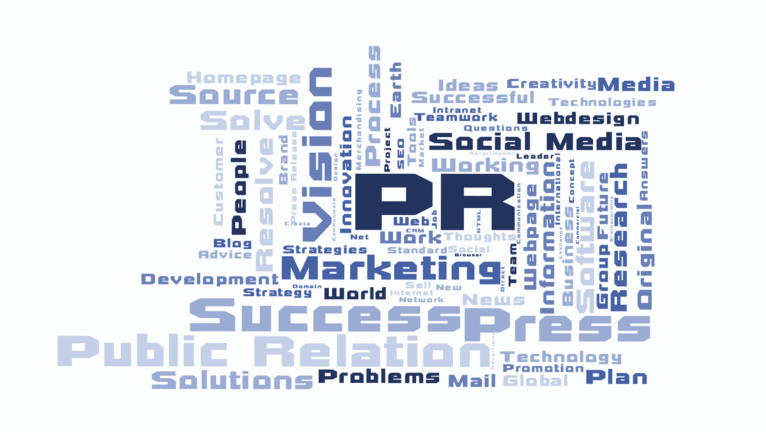Everything You Need to Know About Working in PR
4 min read
Everything You Need to Know About Working in PR
Public Relations (PR) is a dynamic and ever-evolving field that plays a crucial role in shaping and maintaining a company’s image and relationship with the public. Working in PR involves a mix of communication, creativity, and strategy to effectively manage a brand’s reputation and influence public perception.
If you’re considering a career in PR or want to understand more about the field, here’s everything you need to know about working in public relations.

1. What is PR?
Public relations is the art and science of managing communication between an organization and its audience. This includes clients, customers, stakeholders, employees, and the general public. PR professionals work to create and maintain a positive image for a company, individual, or brand, often through media relations, press releases, events, and social media.
Unlike advertising, which involves paid promotions, PR focuses on earning media coverage and public goodwill through unpaid, organic methods.
2. What Does a PR Professional Do?
PR professionals are responsible for managing a brand’s communication with the public. Their duties may vary, but typically include:
- Writing and distributing press releases
- Crafting pitches to journalists for media coverage
- Managing a brand’s social media presence
- Organizing and coordinating events
- Handling crisis communication and damage control
- Engaging in influencer and blogger outreach
- Building relationships with media outlets and journalists
- Creating communication strategies for product launches, campaigns, or corporate news
PR professionals are often storytellers, finding ways to present their clients in a positive light to both the media and the public.
3. Skills You Need to Succeed in PR
To succeed in PR, you need a diverse set of skills, both technical and interpersonal. Some key skills include:
- Strong Communication Skills: PR professionals must be excellent communicators, both written and verbal. Whether you’re writing a press release or pitching a story to a journalist, clarity and persuasion are key.
- Creativity: Coming up with innovative ideas to position your brand and engage the audience is crucial in PR. Creativity helps in crafting compelling stories, organizing events, and navigating media channels.
- Problem-Solving Skills: PR professionals often deal with unexpected challenges, especially in crisis management. The ability to think on your feet and quickly find solutions is invaluable.
- Relationship Building: Much of PR revolves around building relationships—whether with the media, influencers, or internal stakeholders. Networking skills and the ability to foster long-term relationships are essential.
- Adaptability: The PR landscape is constantly changing, especially with the rise of digital media. Being adaptable and open to new communication channels, trends, and tools is important.
- Organizational Skills: PR professionals often juggle multiple projects at once, so good time management and organization are necessary to meet deadlines and maintain quality.
4. The Different Types of PR
PR isn’t a one-size-fits-all industry. There are several different types of PR, each with its own strategies and objectives:
- Media Relations: Focused on building relationships with journalists and media outlets to secure press coverage.
- Corporate Communication: Managing internal and external communication for companies, including handling investor relations, employee communication, and corporate announcements.
- Crisis Communication: Managing a company’s response to unexpected crises or negative publicity to mitigate damage to its reputation.
- Event Management: Planning and executing events that reflect positively on the brand, such as product launches, trade shows, or press conferences.
- Social Media PR: Engaging with audiences directly through platforms like Twitter, Instagram, and LinkedIn to build a brand’s reputation and reach.
5. Challenges in PR
Working in PR is fast-paced and comes with its own set of challenges. Some common difficulties PR professionals face include:
- Crisis Management: PR professionals often have to deal with crisis situations where a brand’s reputation is at risk. This could involve responding to negative press, handling a product failure, or dealing with a public scandal.
- Measuring Success: Unlike advertising, PR outcomes are harder to quantify. It can be challenging to measure the direct impact of media coverage or a successful event on the bottom line.
- Keeping Up with Trends: The PR industry is constantly evolving, especially with digital media. Staying ahead of trends in social media, SEO, influencer marketing, and content creation requires continuous learning and adaptability.
6. The Role of Digital and Social Media in PR
The rise of social media has transformed PR significantly. Platforms like Facebook, Instagram, Twitter, and LinkedIn offer PR professionals direct access to their target audience, bypassing traditional media channels. Social media has also made communication more immediate and transparent, allowing brands to engage directly with consumers.
Digital PR now involves more than just media relations; it includes online reputation management, influencer partnerships, and content marketing. SEO (Search Engine Optimization) has also become critical for PR strategies, as online visibility plays a big role in how a brand is perceived.

7. How to Break Into PR
If you’re looking to start a career in PR, here’s how you can begin:
- Get Educated: A degree in communications, marketing, journalism, or a related field is a good foundation.
- Gain Experience: Internships, freelance work, or volunteering with organizations can provide hands-on experience and help you build a portfolio.
- Build a Network: Networking is key in PR. Attend industry events, connect with PR professionals on LinkedIn, and build relationships with journalists.
- Stay Informed: Follow industry news, read PR blogs, and stay up-to-date with trends and tools to keep yourself relevant.
Conclusion
Working in PR is exciting, creative, and challenging. It offers the opportunity to shape public perception, build meaningful relationships, and drive positive change for brands and businesses. Whether you’re managing crisis communication or launching a new product, PR professionals are vital in today’s media-driven world.
At MyHoardings, we provide expert PR services tailored to your business needs. From media relations to digital PR, we help you tell your story the right way.
- Email: business@myhoardings.com
- Phone: +91-9953847639
- Website: www.myhoardings.com






